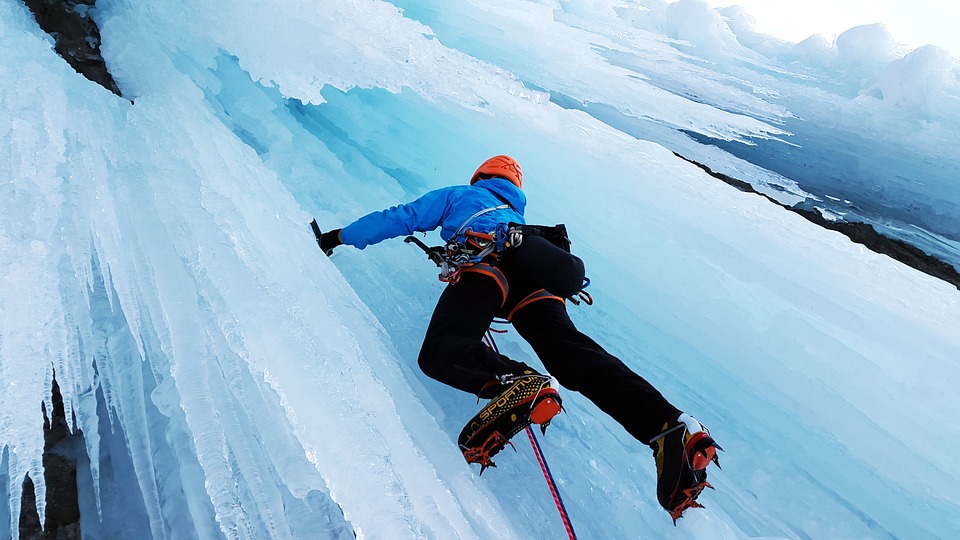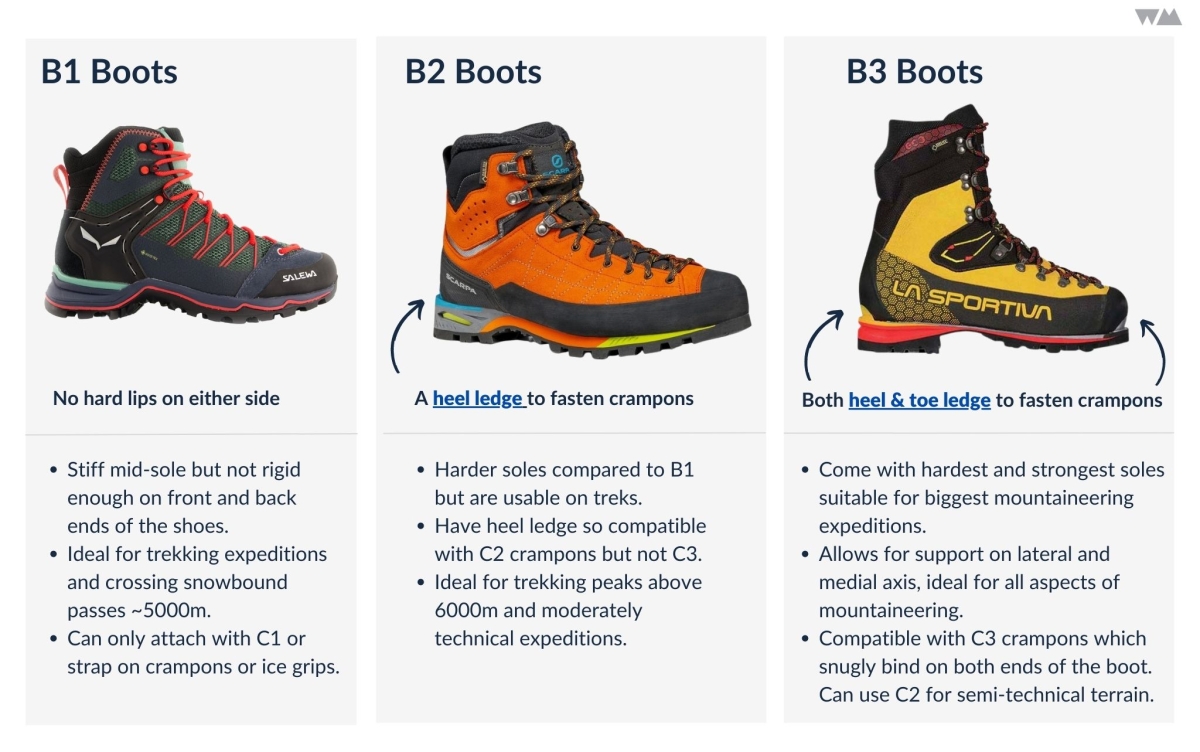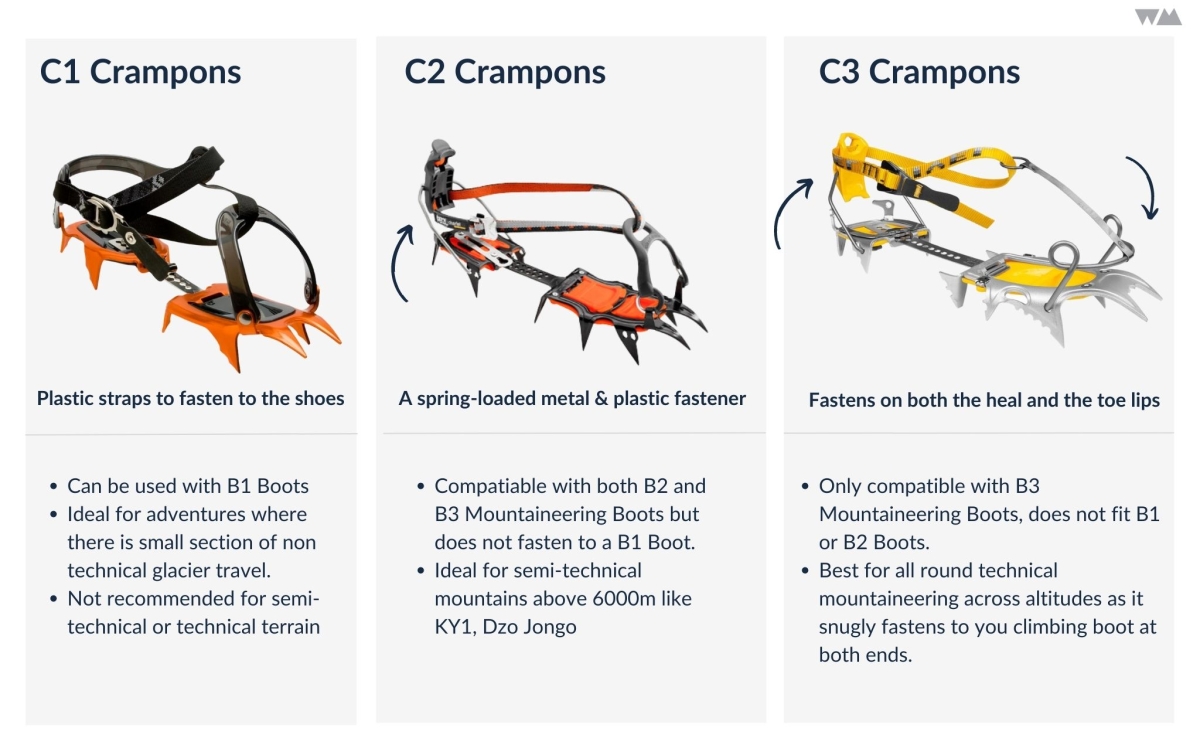WhiteMagic Adventure Blog
Mountaineering Boots and Crampons - Picking the right one for your climbing journey
Mountaineering Boots and Crampons - Picking the right one for your climbing journey
I once had a seasoned client who joined us for an expedition in the Garhwal Himalaya. Since he had done quite a bit of climbing before, I did not bother to check his climbing equipment as minutely as I would have done for an inexperienced climber. I just made sure that he had everything and moved on to the next one. He had got himself a brand-new pair of crampons and when he got them out in the mountain we realized that they did not have the anti-balling plates on them. [An anti-balling plate is usually made of plastic, rubber or a similar kind of material and comes attached to the bottom of the crampon and prevents snow from sticking to it]. We had a major snowstorm during the climb and the fresh snow made it really tough for him. He was really strong and somehow struggled to make it to the summit, on the way back he had a really hard time staying upright as he kept slipping all the time. What might have been an enjoyable experience turned out to be a disaster for him.
The crampons he had brought were meant for climbing frozen waterfalls (and hence did not have the anti-balling plate). When I asked him why he had bought those crampons, he said they were the most expensive ones and he assumed that they would be the best ones.
This brings me to the point that it's crucial to understand the features and usability of any equipment you plan to purchase, especially for mountaineering or other outdoor activities that require specialized gear. Doing so will help ensure that you make an informed decision and choose the right equipment for your needs, skill level, and intended use. It's also essential to take into account factors such as comfort, durability, weight, and compatibility with other gear you plan to use. Taking the time to research and understand the equipment you're considering will help you avoid making costly mistakes and potentially dangerous situations.
Hence, through this post, we try to educate you about the various types of Boots and crampons to help you make the right choice.

Photo Credits: MaxPixel
Choosing the right pair of boots for mountaineering -
One has to understand that a mountaineering boot is a technical piece of equipment and not just any boot. One cannot emphasize enough the fact that most climbing is done by the feet. A boot is a primary tool of contact between our body and the slope. We use different parts of the boot (toe/ heel/ inside edge/ outside edge) for different ascending & descending techniques.
Here is a quick explainer of the various types of boots and the corresponding crampons which can go with them
Mountaineering Boots –
When we look at various mountaineering boots, there are two important factors to consider -
-
The rigidity or the stiffness of the sole & the upper.
-
Weather Resistance & insulation
In terms of rigidity - Mountaineering Boots are roughly divided into three categories based on use-case - they are termed B1 - B2 and B3 boots. What does this really mean?
The number next to the B indicates the rigidity of the sole, the higher the number, the more rigid the sole. Hard soles are important because while climbing on inclined snow slopes, we use the edges of the sole to get a grip and much of the body weight is borne by it. So stiffer the sole, the more weight-bearing capacity it has. Similarly, when we are climbing on ice, the front points of the crampons which are attached to the soles, need to take the entire body weight of the climber. Hence, the more rigid the sole, the better it is for technical manoeuvring.
Here are the use cases for each category of Boots –

In terms of weather resistance and insulation -
Among B3 boots, there are further 3 categories which are rated for the insulation/ warmth that they provide. There are Single Layer, 1.5 Layer and double-layer B3 boots. For those intending to climb upwards of 6500m in the Himalayas or doing any winter climbs, or ice climbing, it is best to have double-layer boots.
The no of layers adds to the bulk and the weight of the boot and reduces the flexibility but provides the much-needed warmth for extreme temperatures.
Nowadays, many B3 boots come with integrated gaiters and are quite commonly used on 8000m mountains and on cold mountains like Denali, Vinson Massif etc.
When choosing a mountaineering boot, it's essential to consider factors such as the type of terrain you plan to climb and the weather conditions. It's also crucial to ensure a proper fit and break-in period for the boots, as an ill-fitting boot can cause discomfort and injury during climbing.
Crampons -
As seen above, the crampons too follow a rating similar to the Boots, i.e., C-1, C-2 and C-3.
C1 crampons are called ‘strap on’ as they are used on shoes without a heel/toe ledge. They are intended to provide a grip on low-incline snow and ice. C2 crampons are the all-rounder crampons which are fastened by a clip on the heel-ledge but with a rounded fastening point on the front, they are ideal for trekking peaks and moderately technical mountaineering expeditions. C3 Crampons are ‘clip-on’ crampons which are attached with a metal fastener on both the heel as well as the toe ledge. They snugly fit onto the boots and are meant for all semi-technical and technical Himalayan mountaineering expeditions.

Picking the right Boot -
The most important part of the decision-making process is to have an idea of your own climbing goals in the medium-long term. If your interests lie in crossing snow-bound high passes with limited glacier travel, B1 Boots would be sufficient. If you intend to climb trekking peaks and semi-technical mountains under 7000m and do not foresee yourself going on higher/more technical expeditions, B2 Boots and C2 crampons are the ideal choice. You can manage with this combination even on not-so-technical 7000ers as well. If you aspire to climb higher than 7000m on technical terrain or intend to do ice climbing, you would require B3 Boots and C3 crampons.
We strongly recommend you try the boots to check the fit and feel before buying one.
Conclusion -
We hope the above explanation helps in deciding what boots to buy. If you are unsure of what boot to buy at the moment and would rather defer the decision for when you have more clarity on your goals, you can always rent one from us. We provide double-layer Scarpa Inverno B3 Boots for climbing trips in India. In Nepal, there are many different models available for rent. If you are still unsure of what is the right choice for your needs, feel free to write to us.
Happy Climbing!

Add new comment